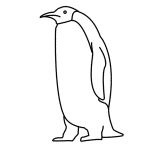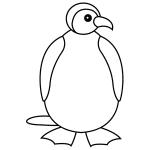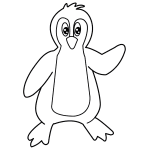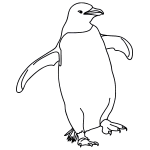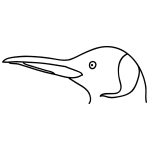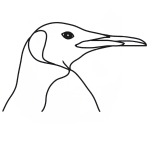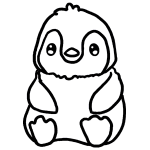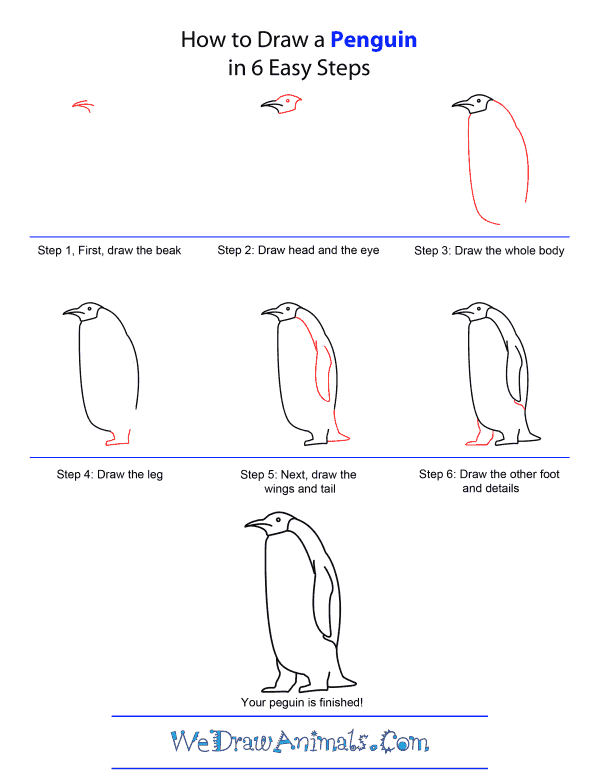In this quick tutorial you'll learn how to draw a Penguin in 6 easy steps - great for kids and novice artists.
The images above represent how your finished drawing is going to look and the steps involved.
Below are the individual steps - you can click on each one for a High Resolution printable PDF version.
At the bottom you can read some interesting facts about the Penguin.
Make sure you also check out any of the hundreds of drawing tutorials grouped by category.
How to Draw a Penguin - Step-by-Step Tutorial
Step 1: First draw the beak. Think of a sideways "V" shape. There are two very pointy parts. The top of the beak is twice as long as the bottom part.
Step 2: Now draw the tiny eye right behind the middle beak line. Draw the rest of the head. The top part is a curved line about the length of the top beak. The bottom part of the head is a short, straight line on an angle. Draw a short curved line inward between the ends of these two lines. This short curved line will become the top part of the wing.
Step 3: Draw the long oval shaped body. The back curves down and slightly inward just before the bottom. The belly line curves almost straight down and curves sharply at the bottom. Make the belly line a bit longer than the back line.
Step 4: Continue the belly line to draw a very short leg with a flat foot. The back of the foot will not touch the back line.
Step 5: Right behind that leg draw the short pointy tail. It is the same width as the foot. The back of the tail will join up to the back line. Starting at the bottom of the bumpy bit on the head draw a long line to make the front of the wing. Just above the line of the tail curve the wing back up. The back of the wing will only go halfway up the back.
Step 6: Add the other leg in front of the first leg. It will be the same size. Don't forget the flat foot.
Interesting Facts about Penguins
Although penguins cannot fly, they are birds. They look like they are flying when they jump in and out of water.
Did you know?
- There are about 17 different penguin species. The largest species is the emperor penguin, and the smallest species is the little penguin, also known as the fairy penguin.
- Penguins swim at an average speed of 15 miles per hour. They spend the majority of their lives in water. They can’t breathe underwater, but they are very good at holding their breath for a long time while they swim.
- Penguins keep warm with a layer of fat called “blubber.” The blubber is covered by feathers. Another way they keep warm is by huddling close together in large groups.
- Not all penguins live in arctic areas. There are penguins that also live in tropical climates. All penguins live in the southern hemisphere, except the ones who live in captivity. Those penguins can be found all over the world in places like zoos and aquariums.
Penguins are carnivores that eat seafood such as shrimp, fish, and squid, among others. Penguins communicate through sign language. They do this by using their flippers and moving their heads. They also call out to each other.

